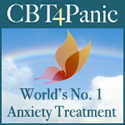What Is Obsessive Compulsive Disorder?

Obsessive Compulsive Disorder is a mental illness that falls into the category of anxiety disorders. While it comes in many different forms, the main symptoms of OCD are obsessive thoughts that cannot be controlled. These thoughts are usually on macabre, difficult subjects. One of the main focuses for many suffering from OCD is cleanliness, and a fear of contamination. Such a fear becomes all encompassing, to the point where the sufferer cannot live a normal life any more.
The second behavior that defines OCD is the “compulsive” part, known as compulsions. Compulsions are the result of the obsessive thoughts that are the primary definition of OCD. While a person can be Pure-O (only suffer thoughts, not compulsions), most sufferers do struggle with compulsions. A compulsion is usually a prevention of the obsessive thoughts, an act which is meant to reassure the sufferer (though this is rarely successful). For example, if someone has obsessive thoughts about contamination and germs, they will wash their hands or clean obsessively to alleviate their fears. However, the period of relief is usually shorts – sometimes mere moments – and then the compulsion to clean or wash their hands begins again. While the compulsions supply no relief whatsoever, sufferers cannot stop themselves from performing them.
OCD is listed as 8th on a World Health Organization list of illnesses that most effect quality of life, above cancer and other physical illnesses. However, only 30% of cases are correctly diagnosed by doctors in the first instance. With treatment and diagnosis OCD can be managed, but never cured.











